How to Send Any Android Notification to PC or Mac
If you are working on a computer, you’ve probably experienced the scenario when your phone notifications bother you during work. Yes, you can always turn off your smartphone, but that way, you may miss some important events. Like for example, when your beloved one invites you to dinner through a romantic message. So, what would you do? Would you keep your smartphone on, and sacrifice your workflow? Or, you would turn it off, and keep your mind concentrated on your tasks?
If you are trying to find out the right answer for this question, stop wasting your time. There is a solution that can keep you notified while you work without even touching your phone. You can synchronize your Android with your PC or Mac, and forget about missed notifications while you still keep your productivity at a high level. If you are wondering how, stay with me in the rest of the article, where I will explain how to send any Android notification to PC or Mac.
How does it work?
Although it may seem like a big deal, the procedure for making your Android device to send notifications to your PC or Mac is pretty simple. Thanks to the Pushbullet app you can finish the whole process in less than 5 minutes.
Pushbullet provides the easiest and fastest way to get notifications, notes, lists, links, addresses, and files from your Android to PC or Mac. All of these functions are executed from the Pushbullet Android app, the Web service, or one of the browser extensions for Mozilla or Chrome. This app will totally change the way you interact with your Android device while working, allowing you to stay focused on your tasks. In this article, I will use the Android app and the Chrome extension to make the communication possible. So, let’s begin.
Pushbullet for Android
The first thing that you need to do if you want to send notifications to your PC or Mac is to get the Pushbullet app for Android. For that purpose go to the Play Store and search for it, or simply click on the following link Pushbullet for Android.
After you installed the app on your device, you can use your Facebook or Google account for logging in. Next, allow the notification access for the Pushbullet app, by turning on the toggle. Pushbullet will also require access to read your messages, phone calls, and phone memory. Make sure you allow them all to make the notification transfer possible.
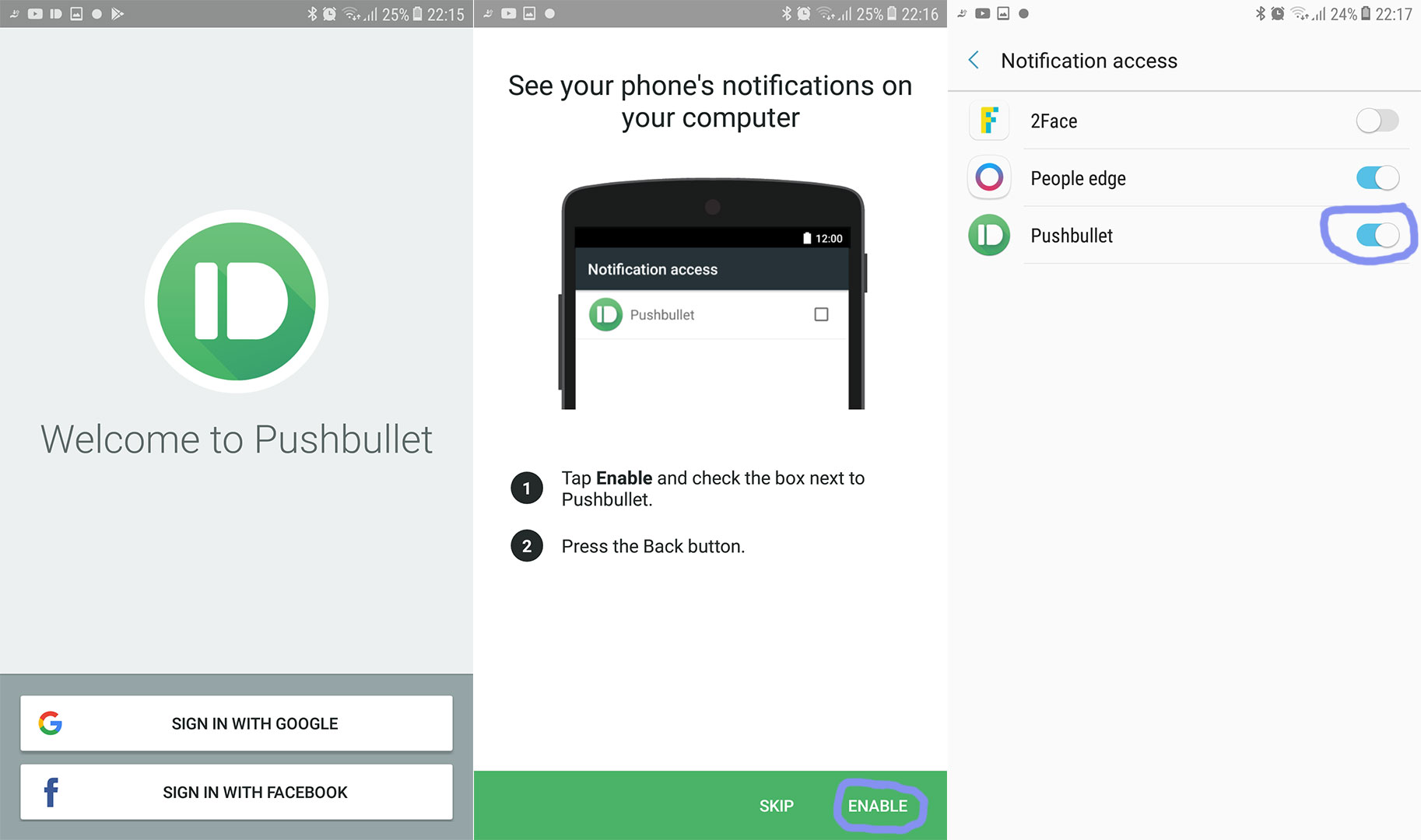
Once you are done with the initial configuring, you’ll need to enable full notification mirroring. For that purpose, open the menu by sliding from the left edge of your screen. Now, choose “Notification Mirroring.” Check if the first toggle is on. If it isn’t, click on it to turn it on. Most of the time this feature is turned on by default.
Other than that, there are a couple of other options which you can configure to your likings. I must mention the feature “Choose which apps to enable.” It allows you choose which app notifications you want to receive to your desktop computer, which I found very useful.
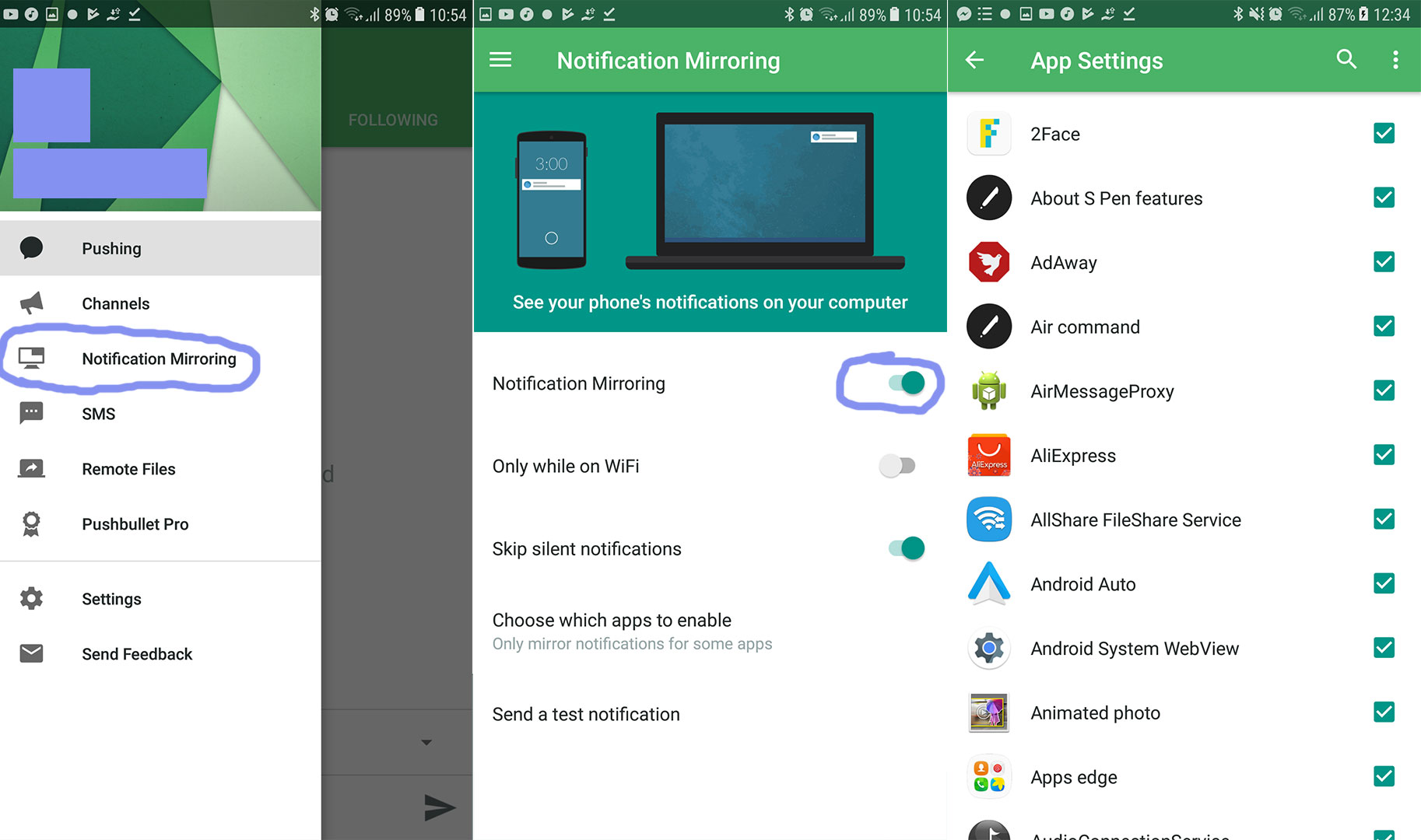
Pushbullet for Google Chrome
Now you should prepare your desktop to receive Pushbullet notifications. First, open the Pushbulet.com and choose which method you want to use. However, I will use the Pushbullet extension for Google Chrome.
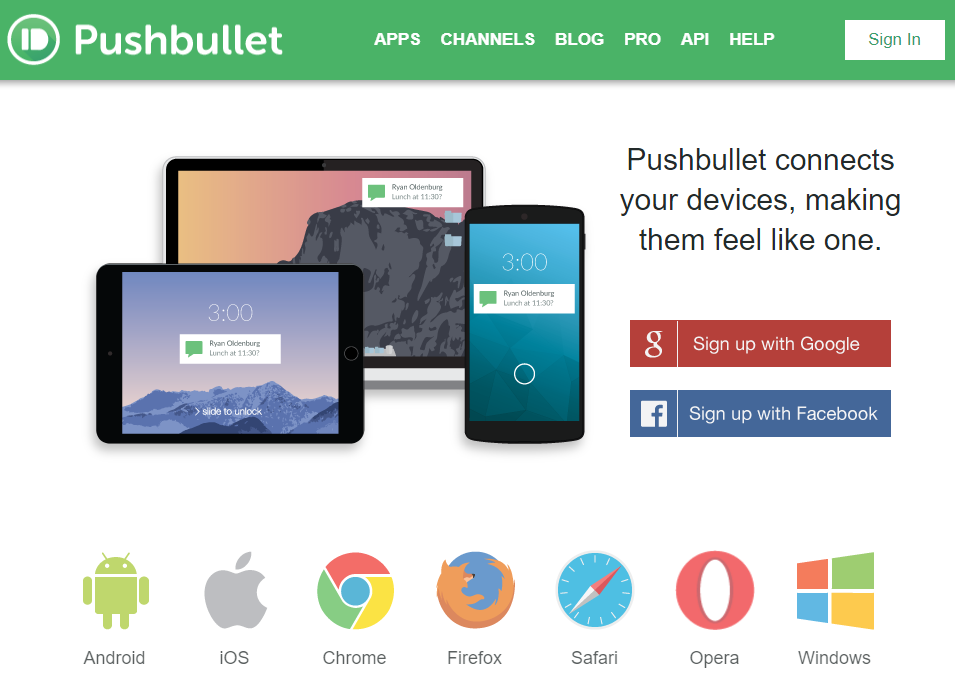
The installation is nothing more than clicking 2 buttons. First, click on “Add To Chrome” and second choose “Add Extension.”
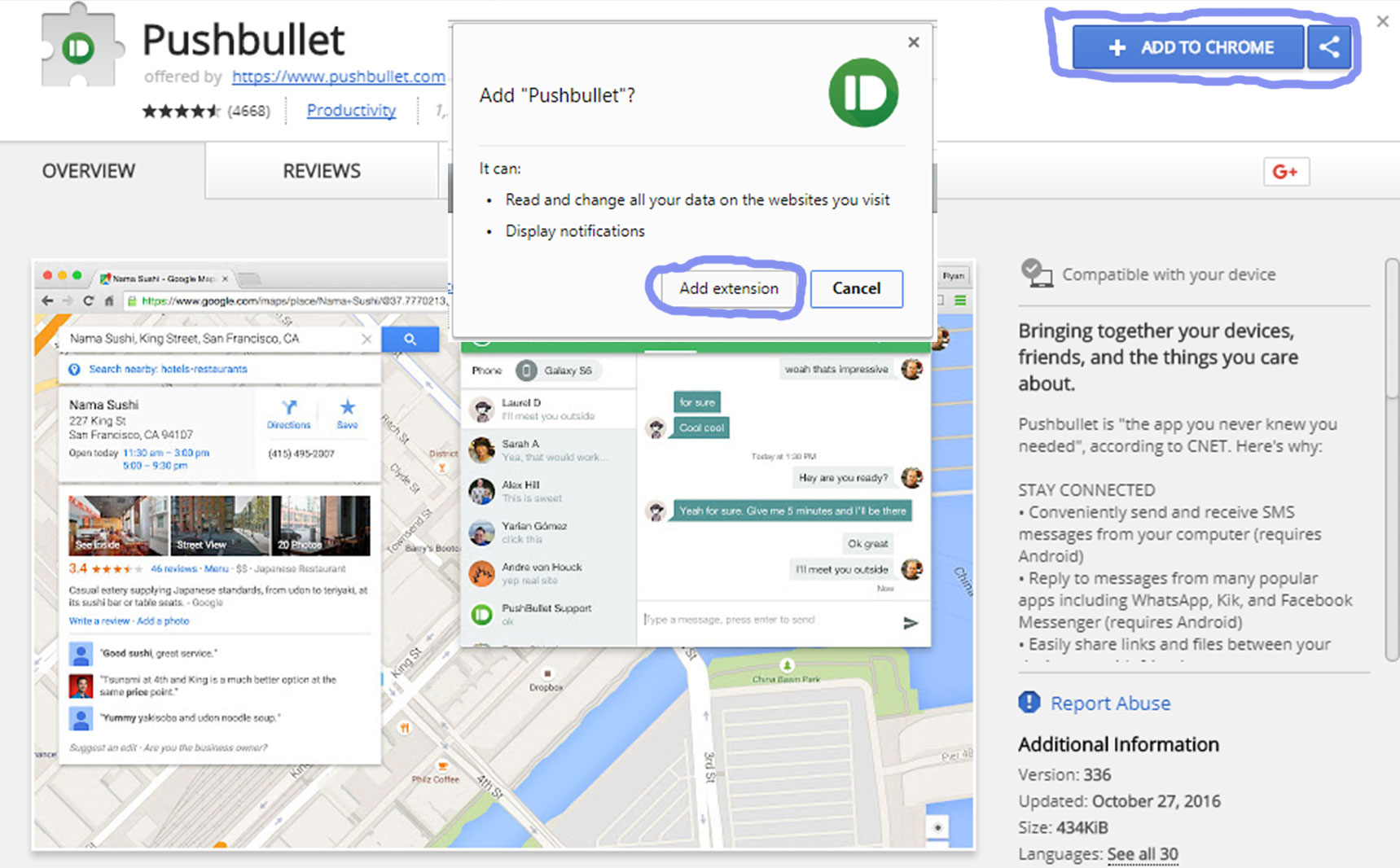
After a couple of seconds, you will see a green icon that pops up on your chrome extensions bar. Open that icon and click on “Sign In.” Here you must choose the same account that you used on your Android app, and the syncing may begin.
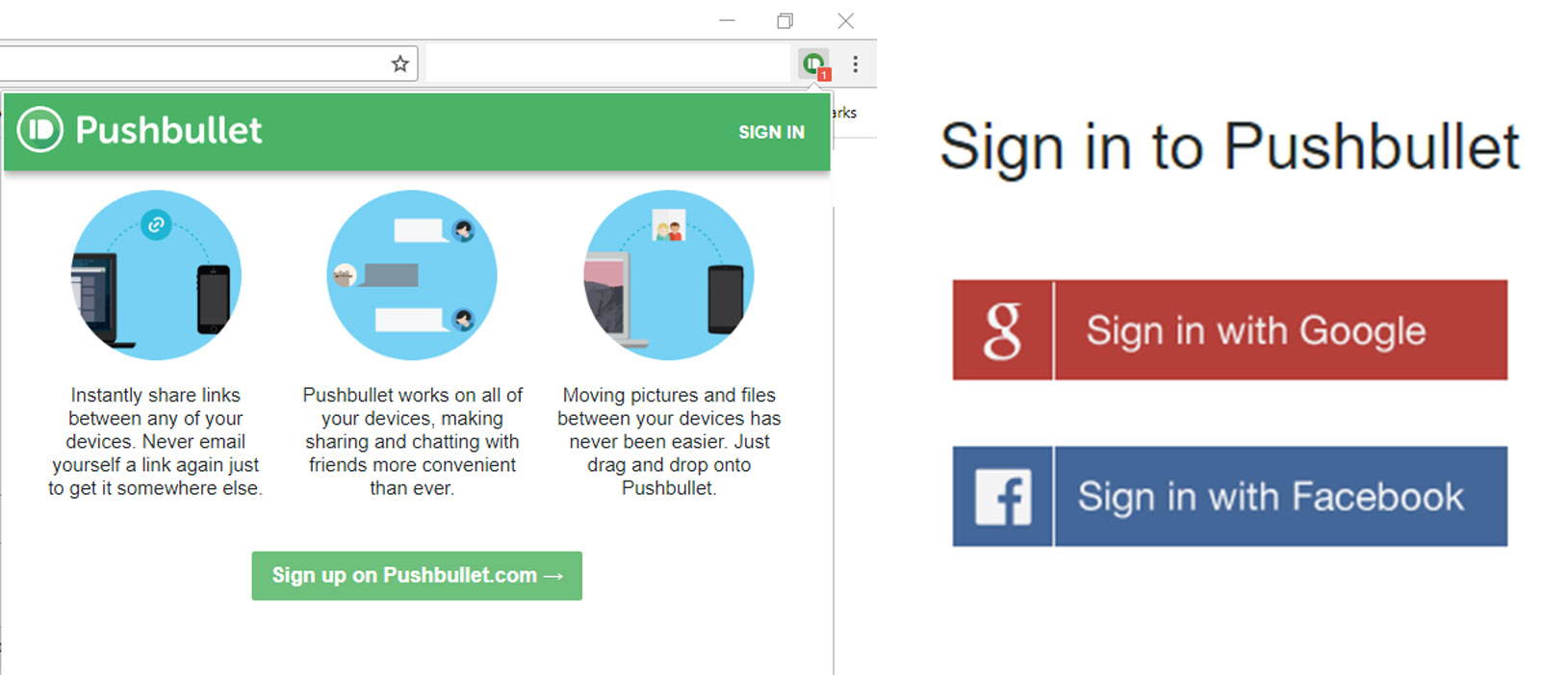
In the Pushbullet website, you will find the Pushbullet dashboard. Here you will see which of the services you have activated. You can click on each of them and turn them on if you like.
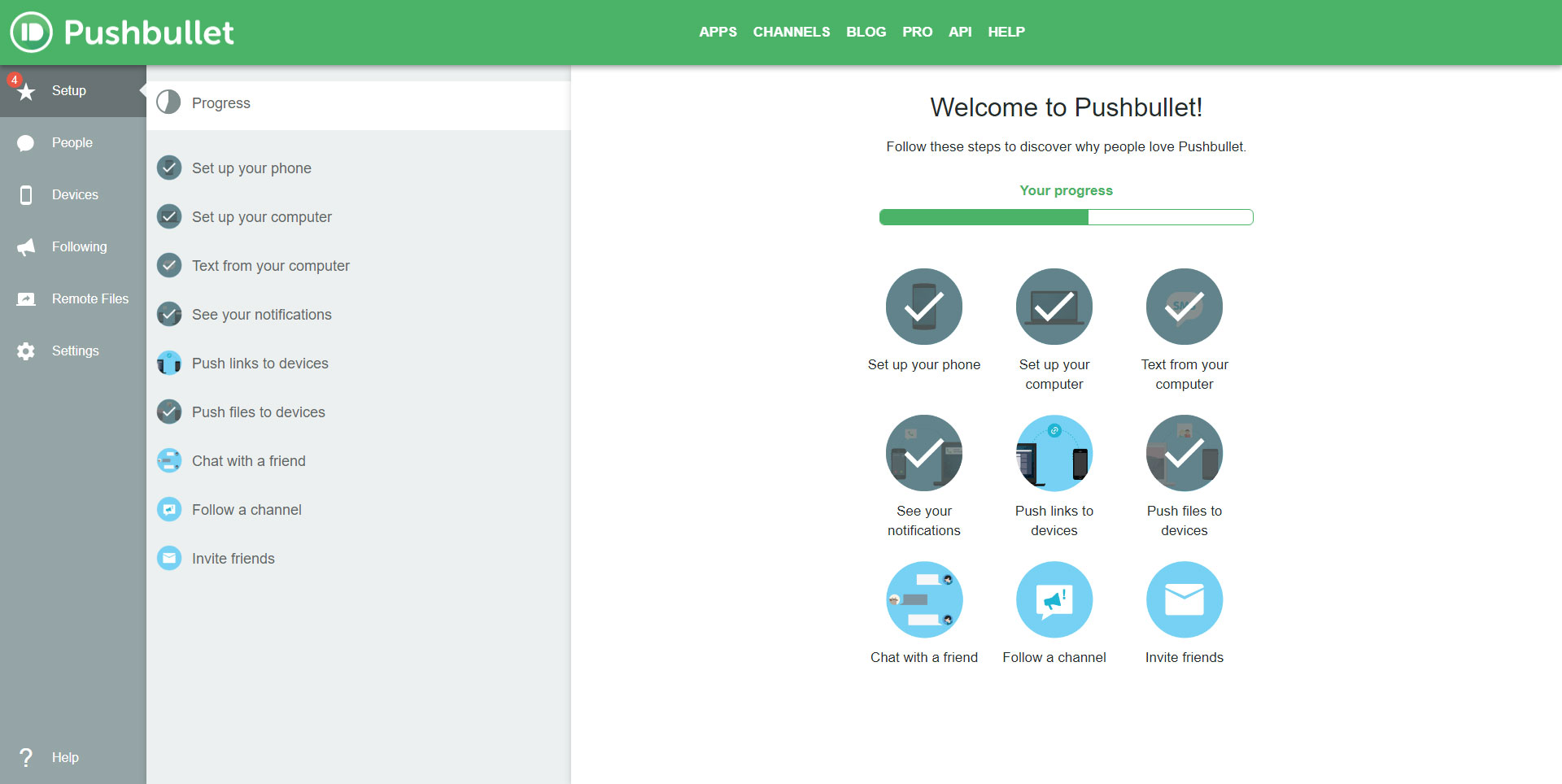
Start Using Pushbullet
Once you’re all set up with Puchbullet for Android and Chrome, you can start using it. First, to test the service, open the Android app, in the “Notification Mirroring” section click on “Send a test notification.” That should send a notification to your desktop.
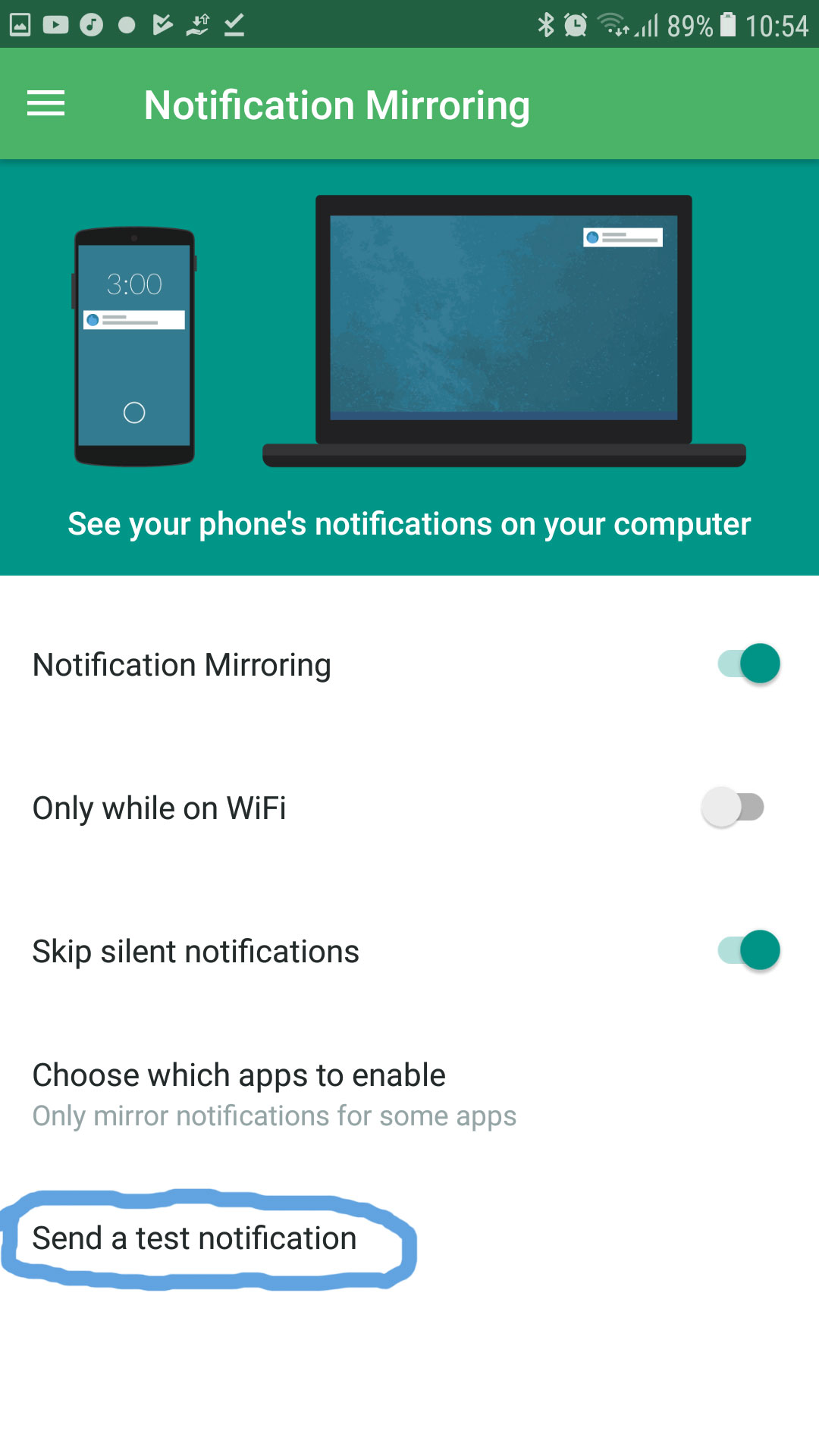
Other than syncing your notification, you can use Pushbullet for sending files up to 25MB from PC or Mac to your Android and vice versa. Also, you can even send files from your Android to another Android logged in to your account. Keep in mind that you can set up Pushbullet on as many Android devices as you want. Another thing that makes this app to stands out from the crowd is the fact that all the files that you send from your desktop computer will be automatically downloaded to your Android. That is more convenient transfer option than using email attachments or some other services.
Wrap Up
Pushbullet provides you an easy way to send any Android notification to PC or Mac. You should definitely try it and share your thoughts with us. Also, if you have any other idea for similar apps that you find useful, feel free tell us your suggestions.